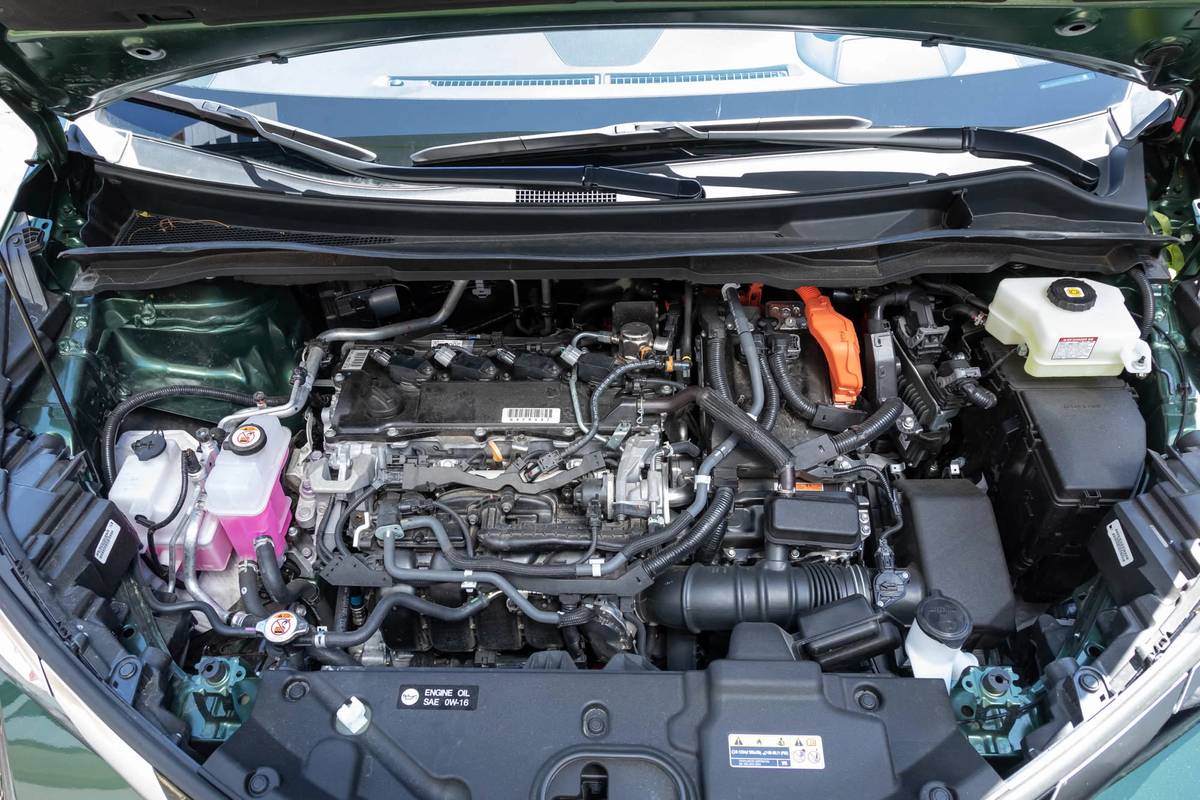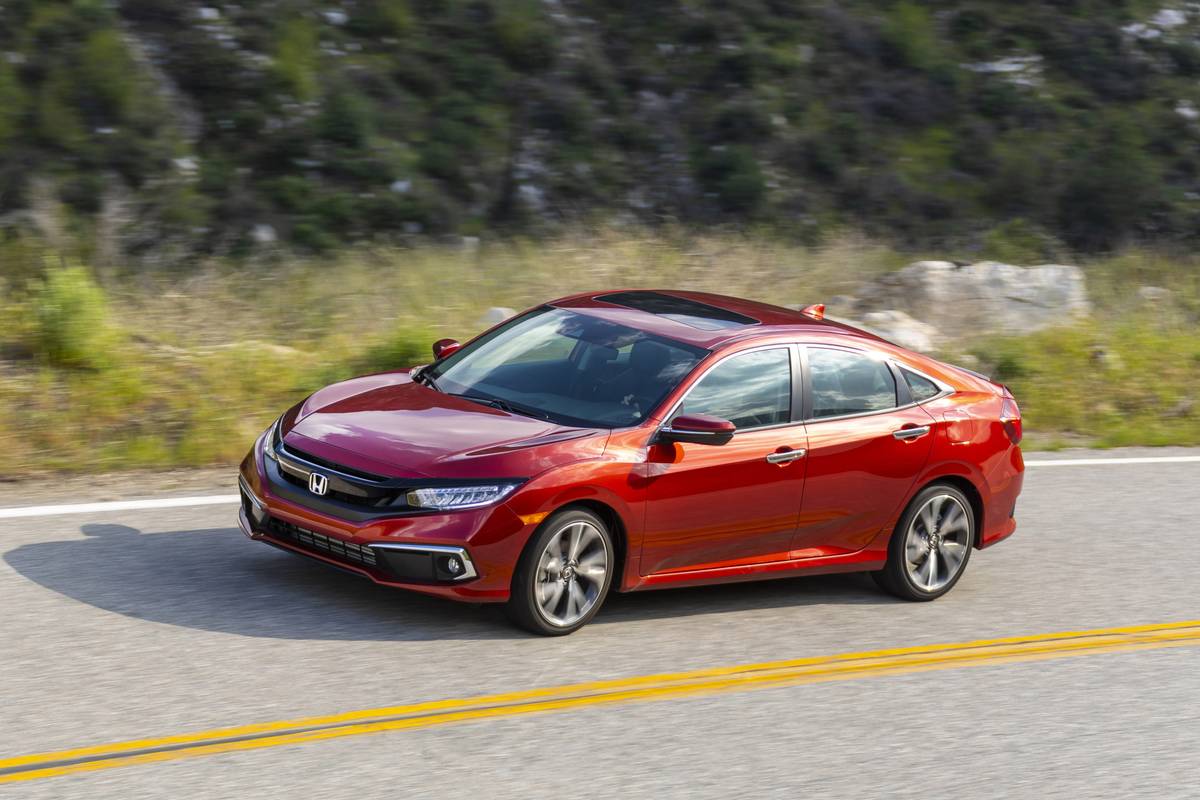2017 Infiniti QX80: Our View

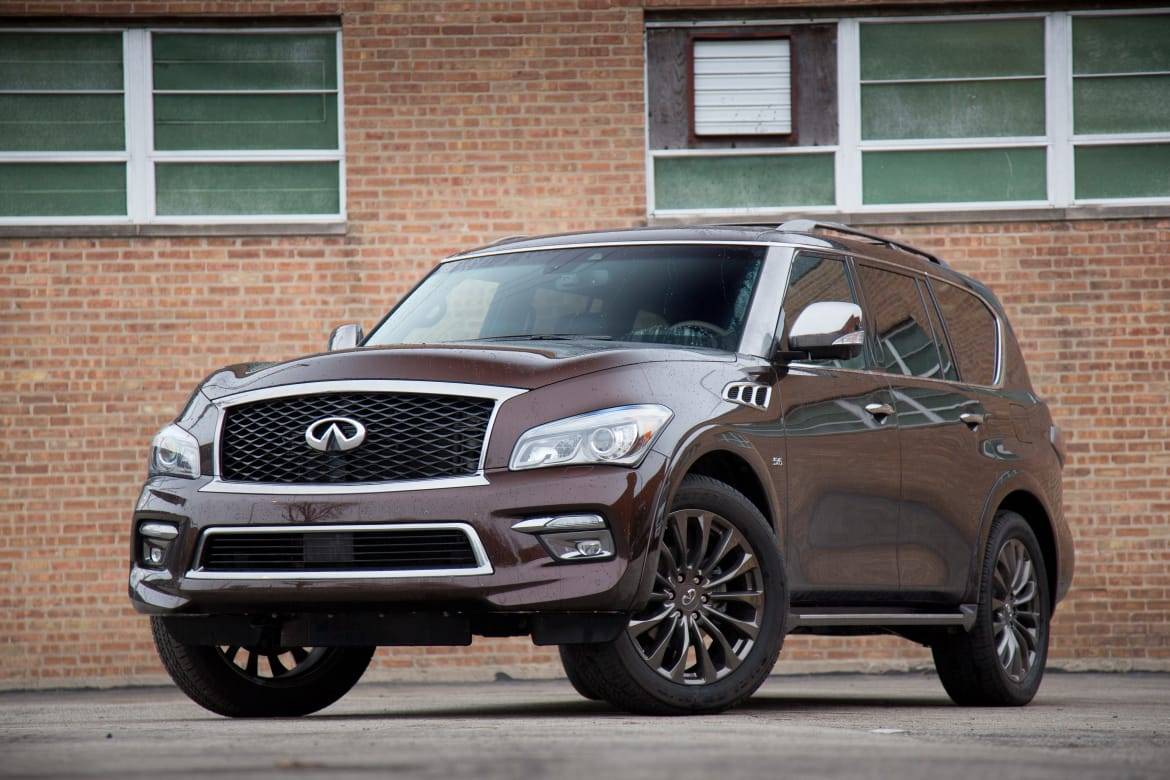
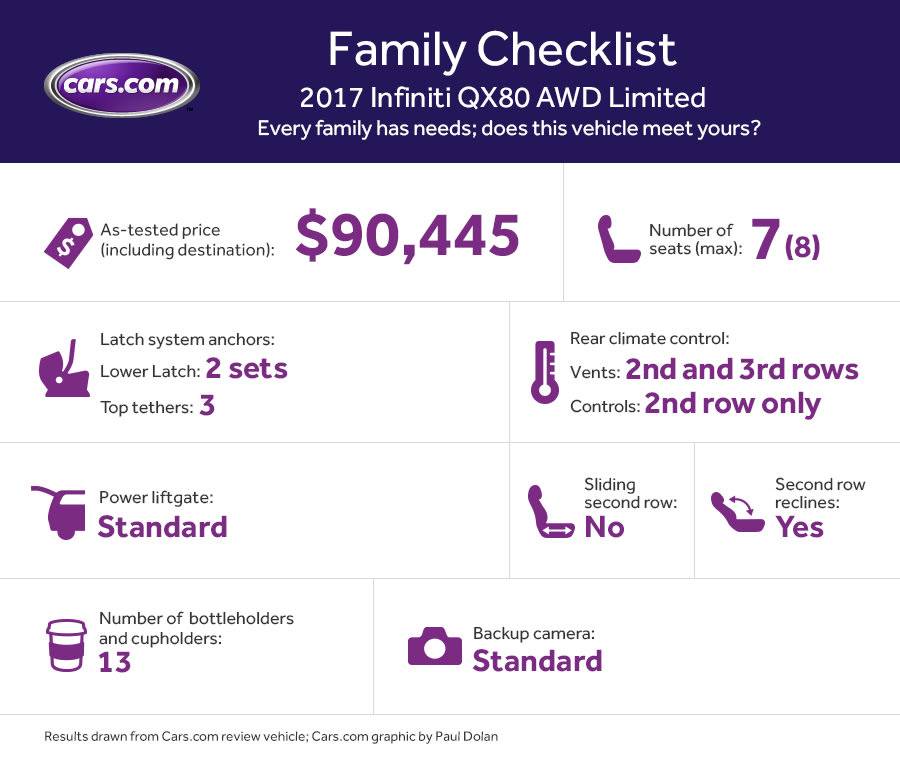
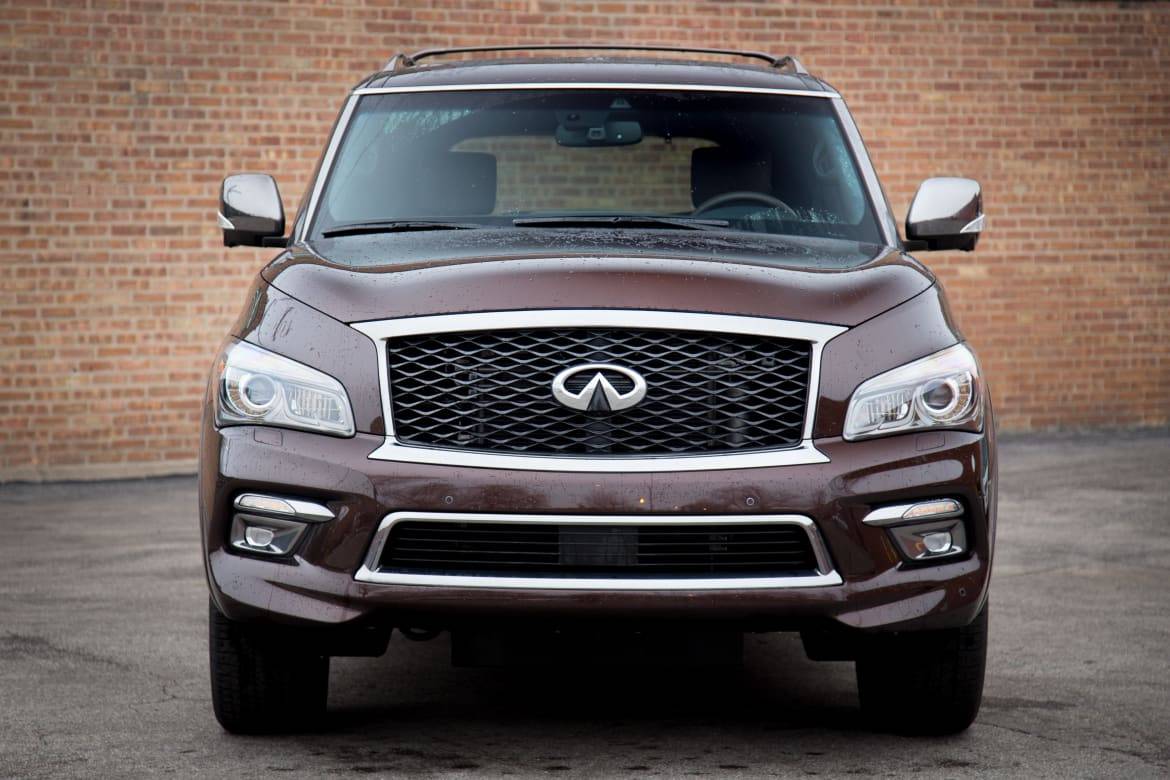
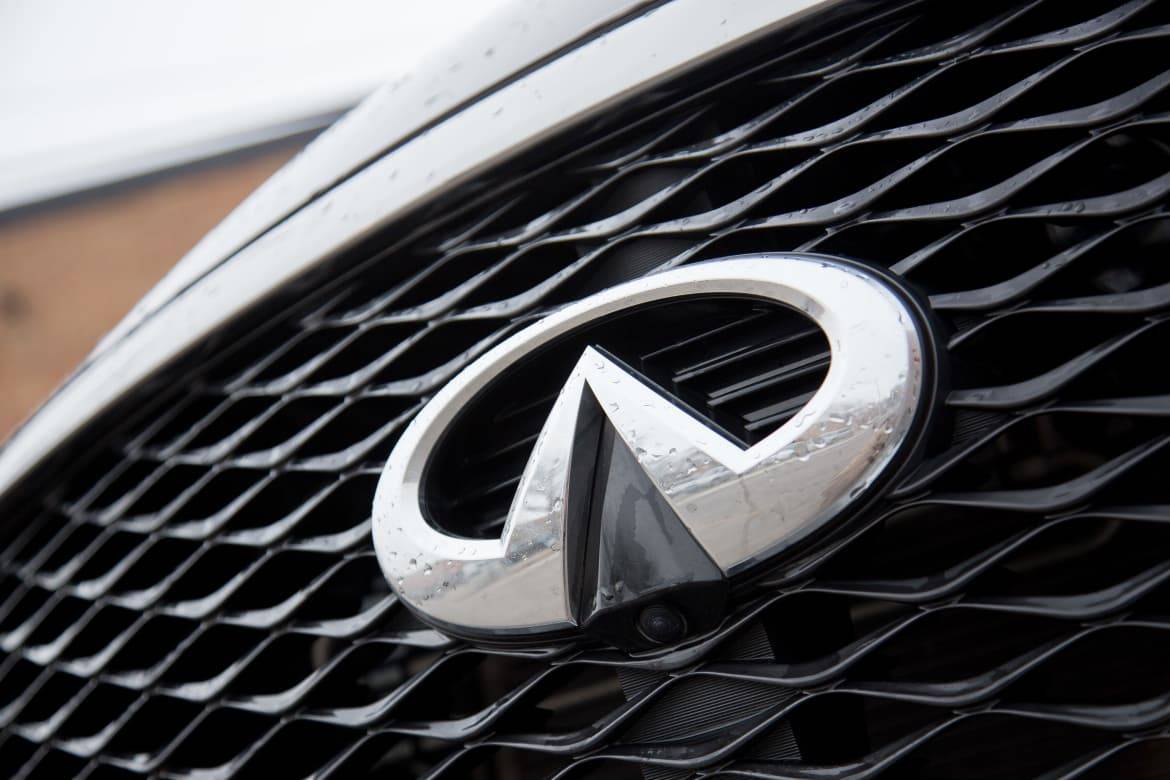
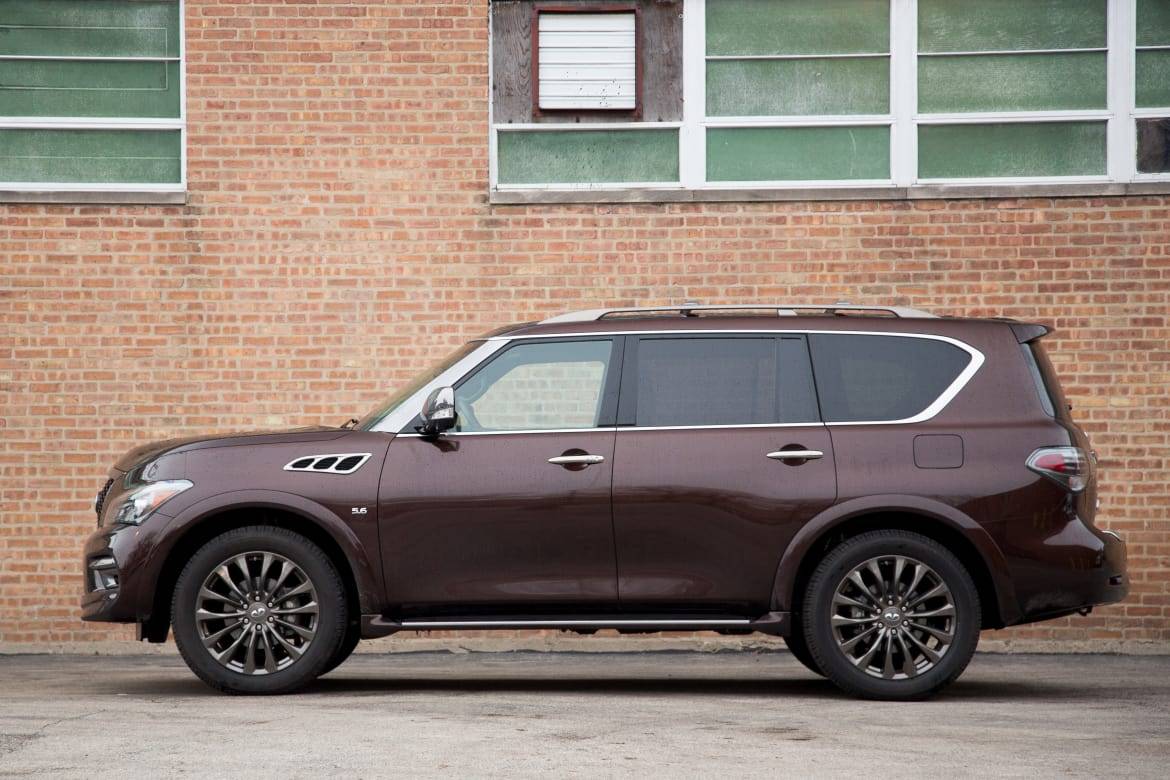
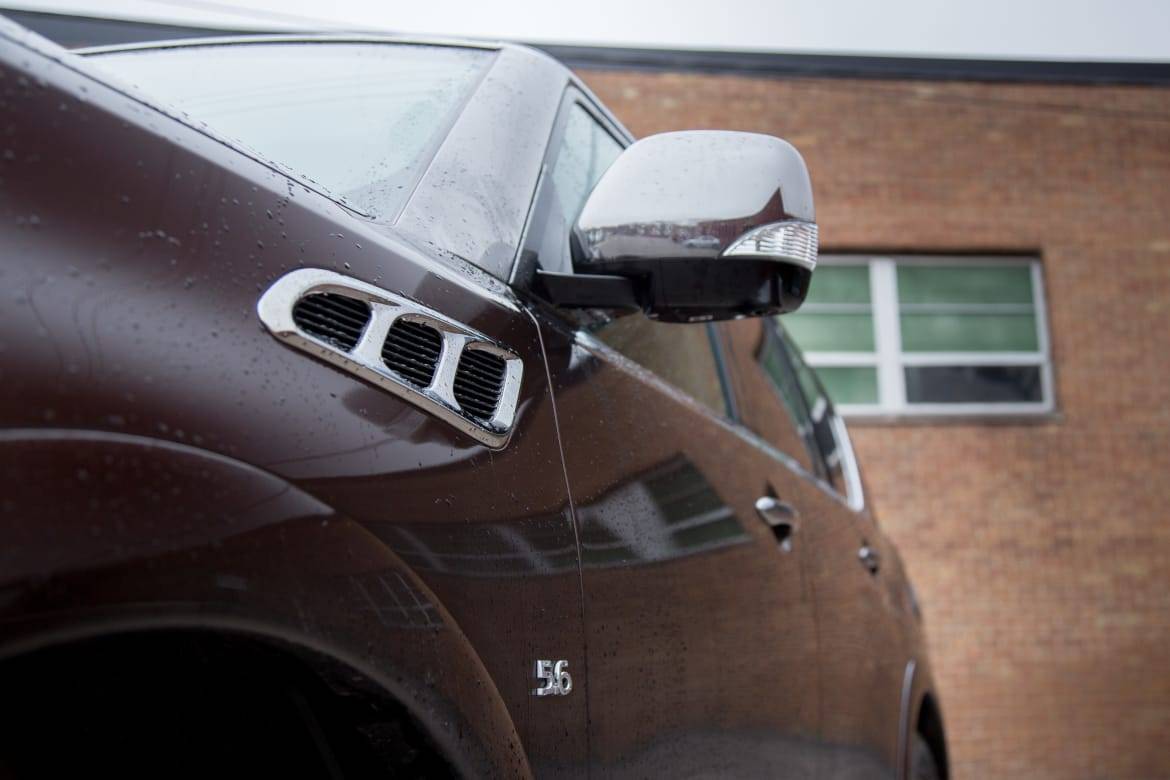
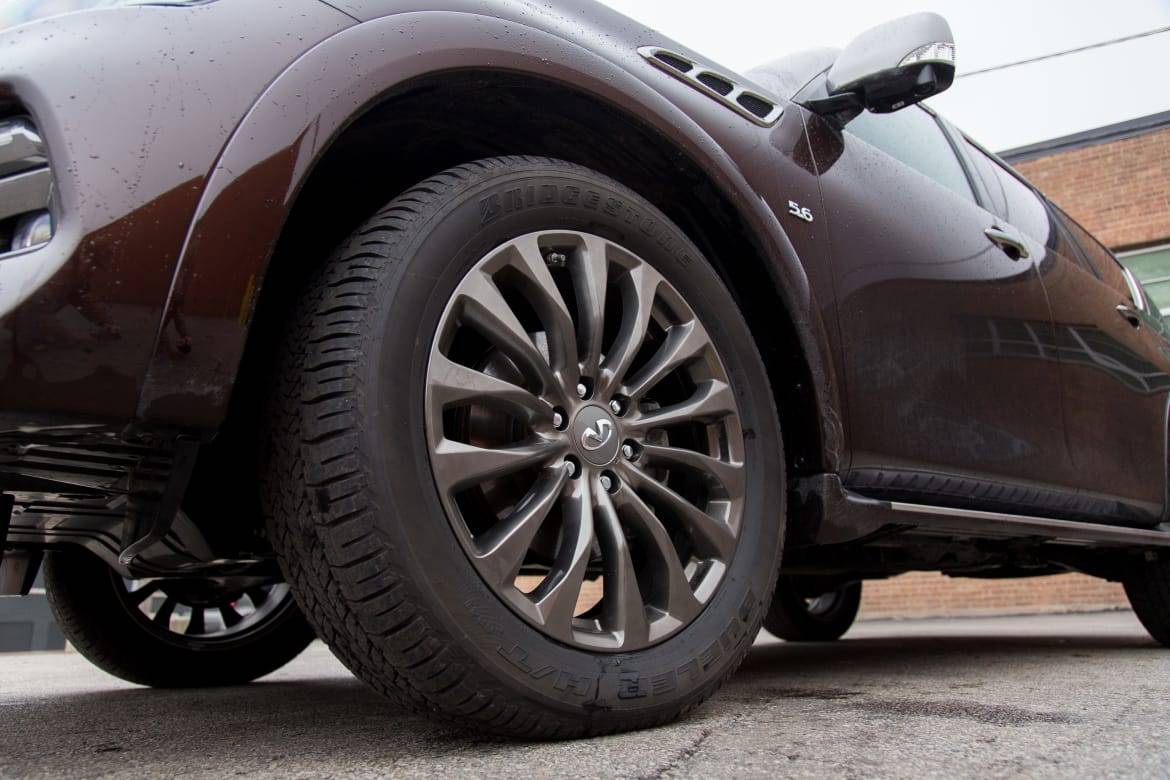
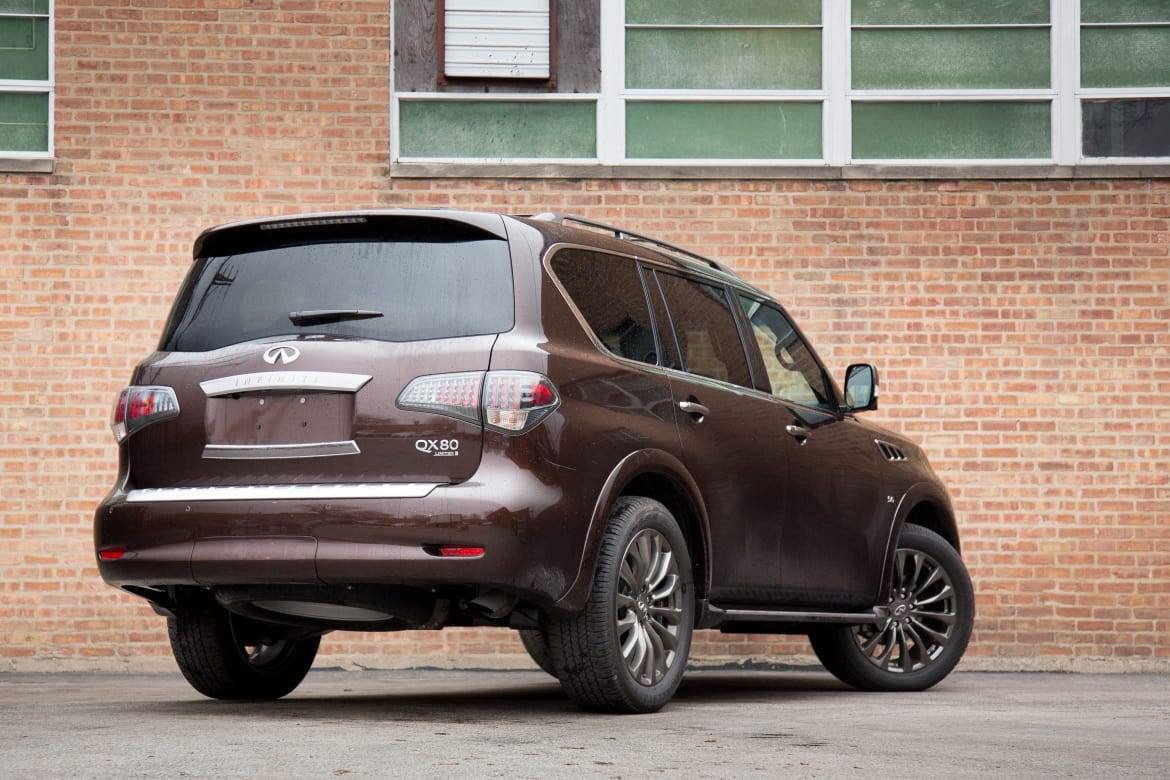
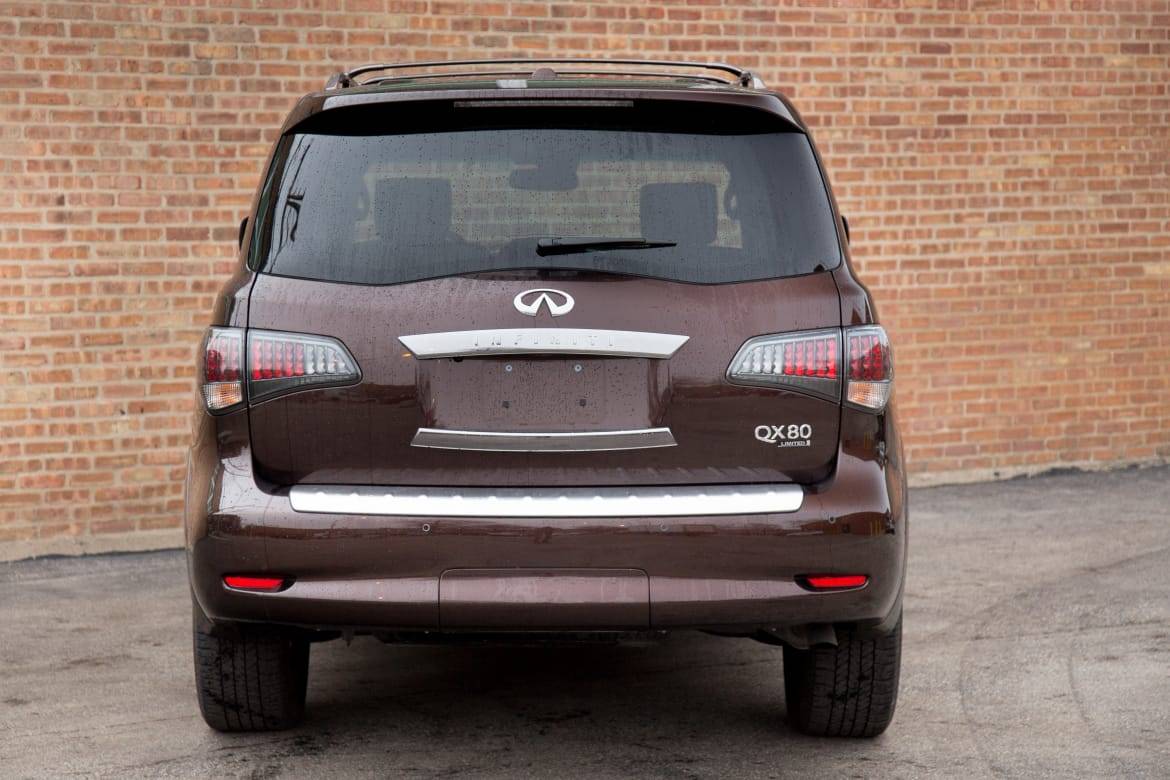
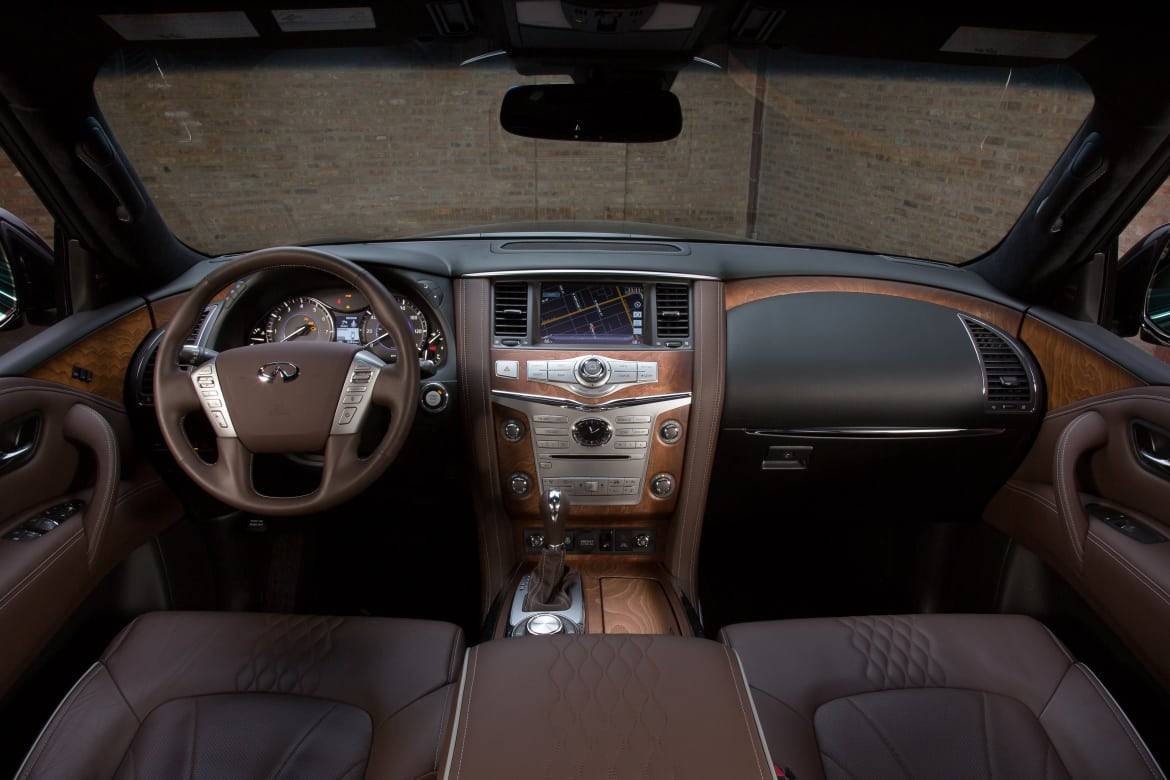
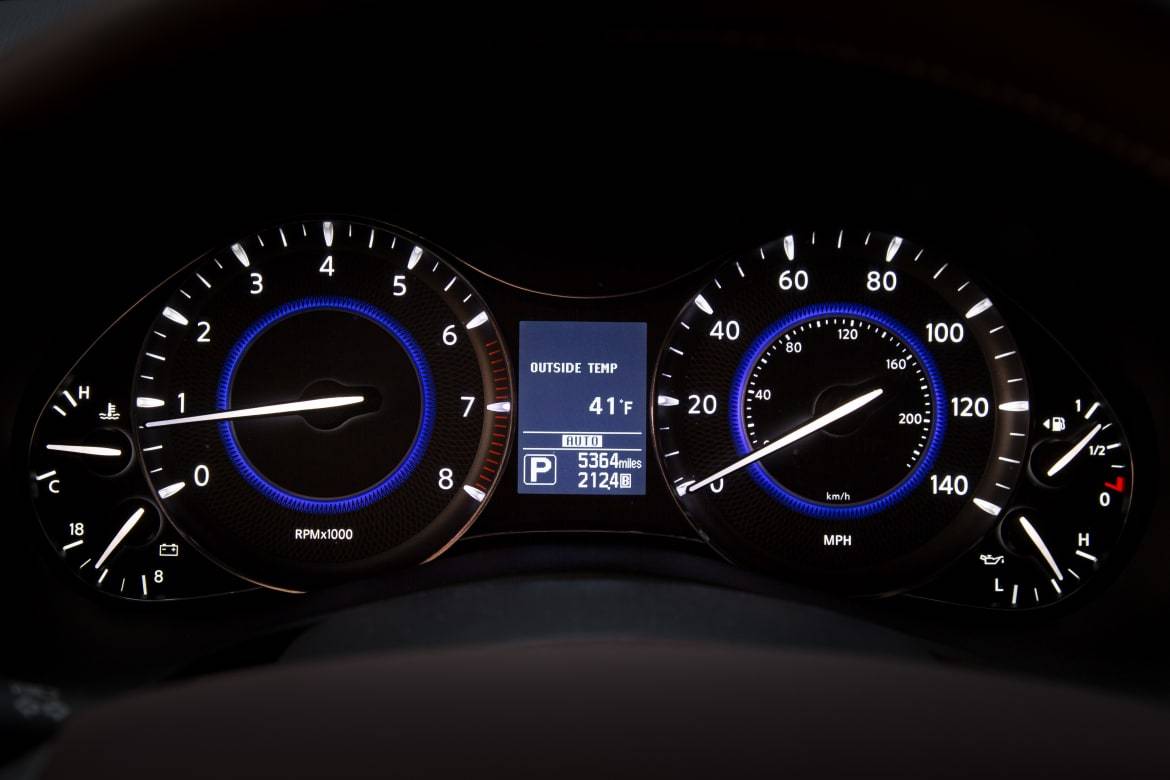
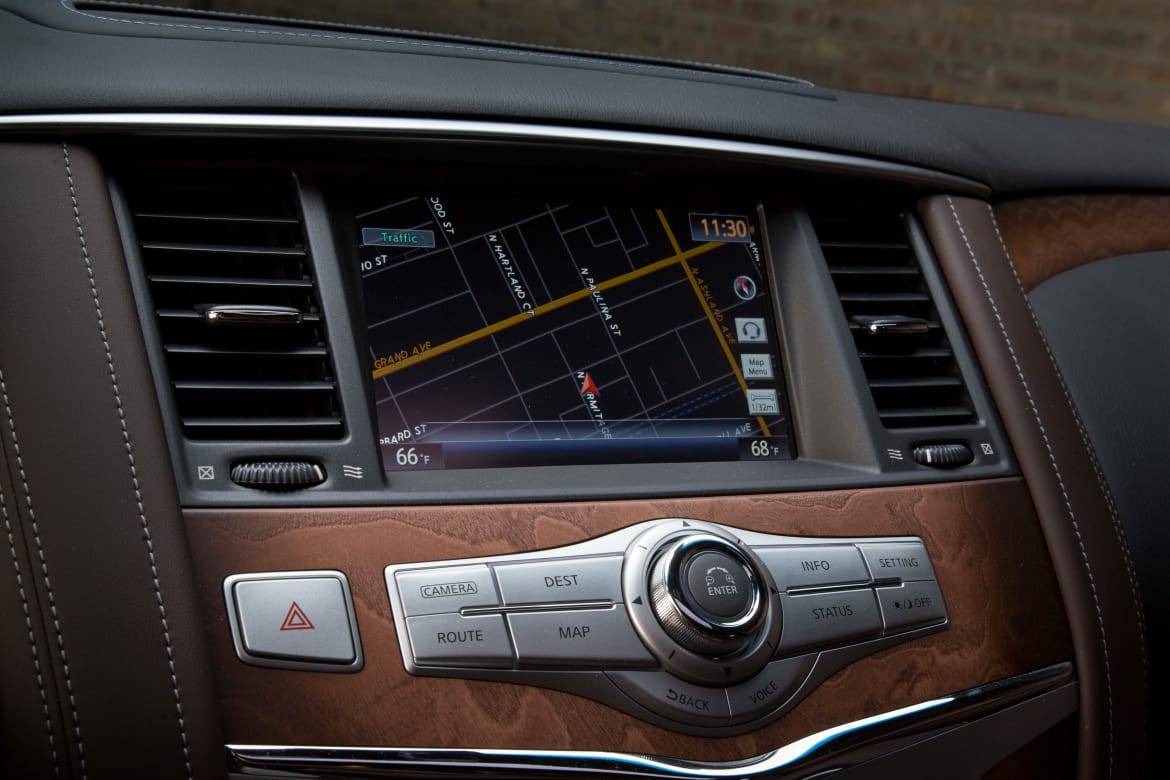
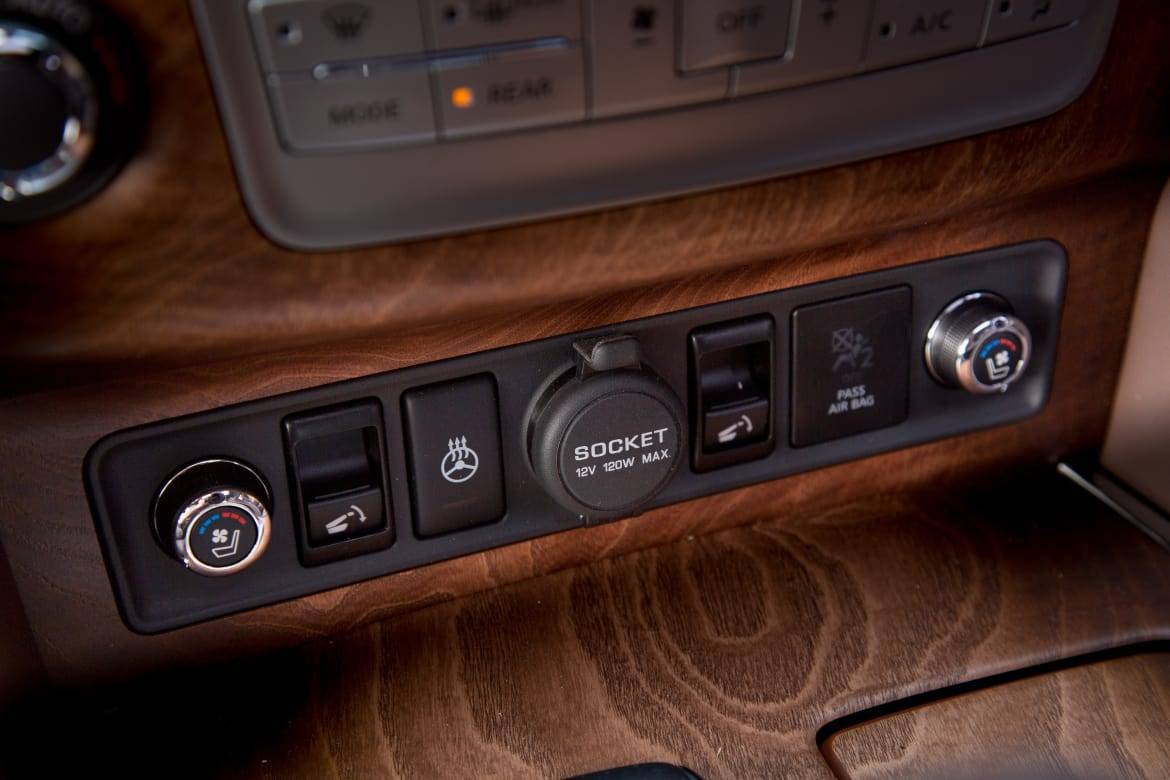
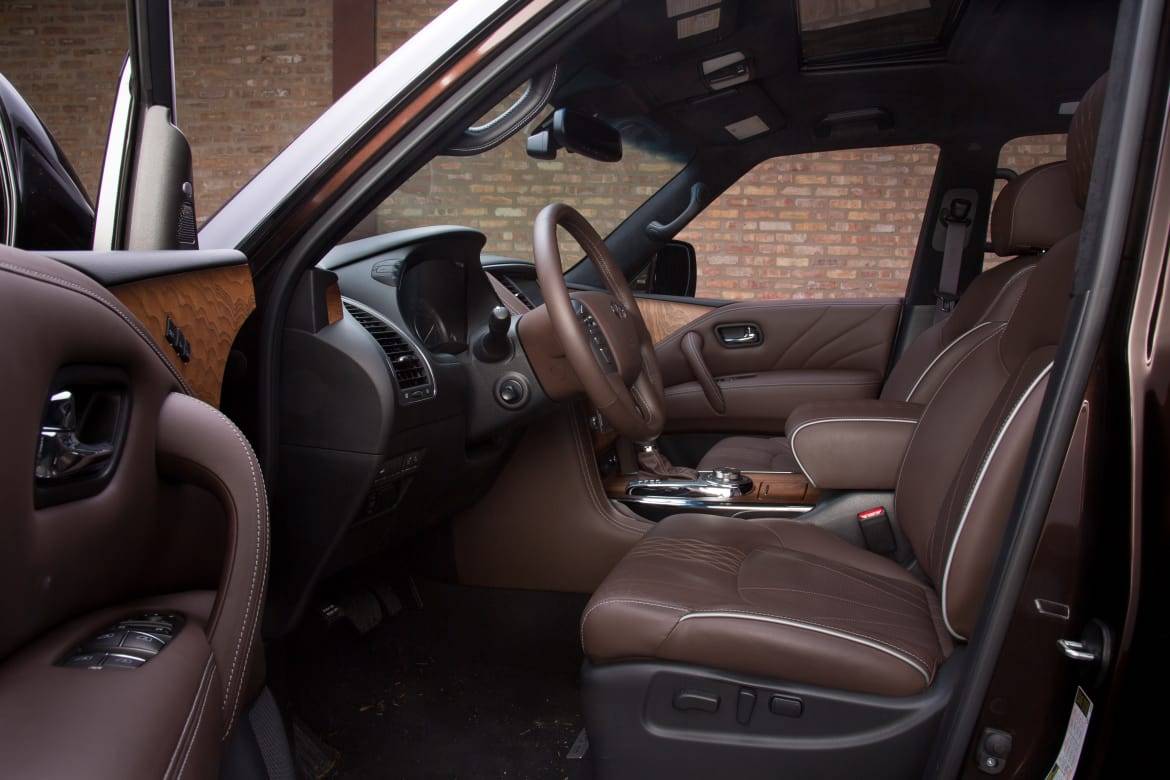
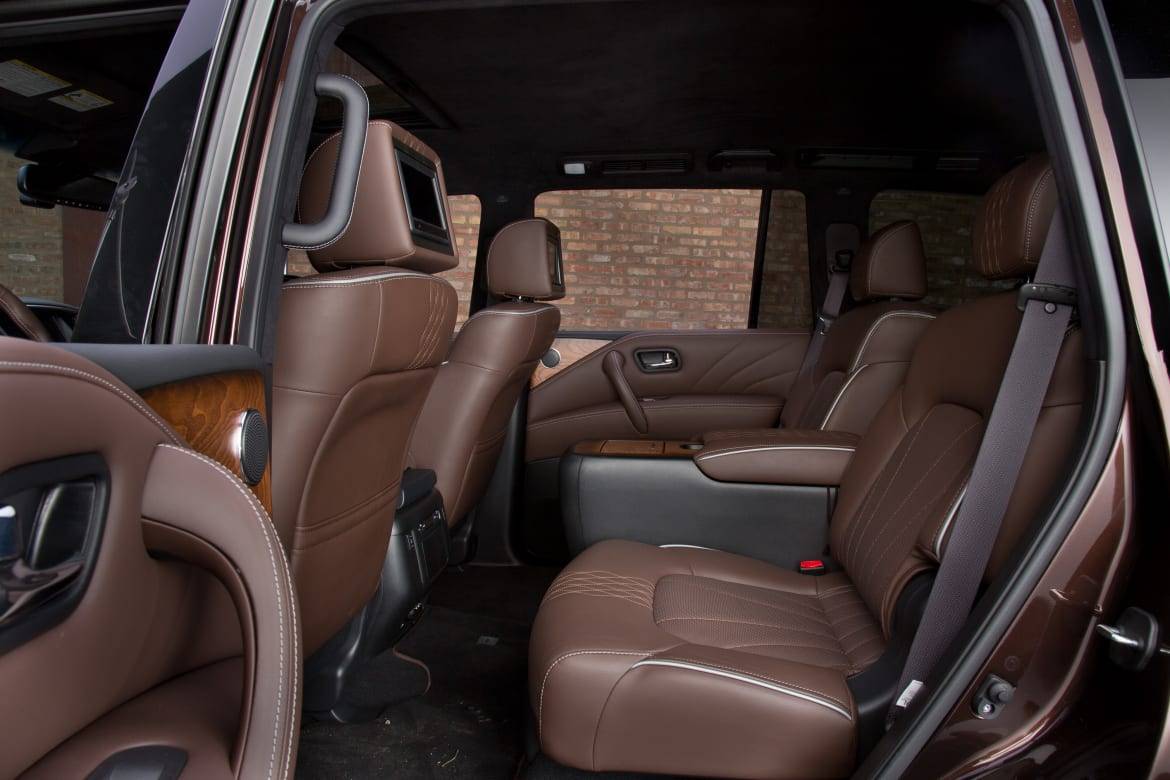
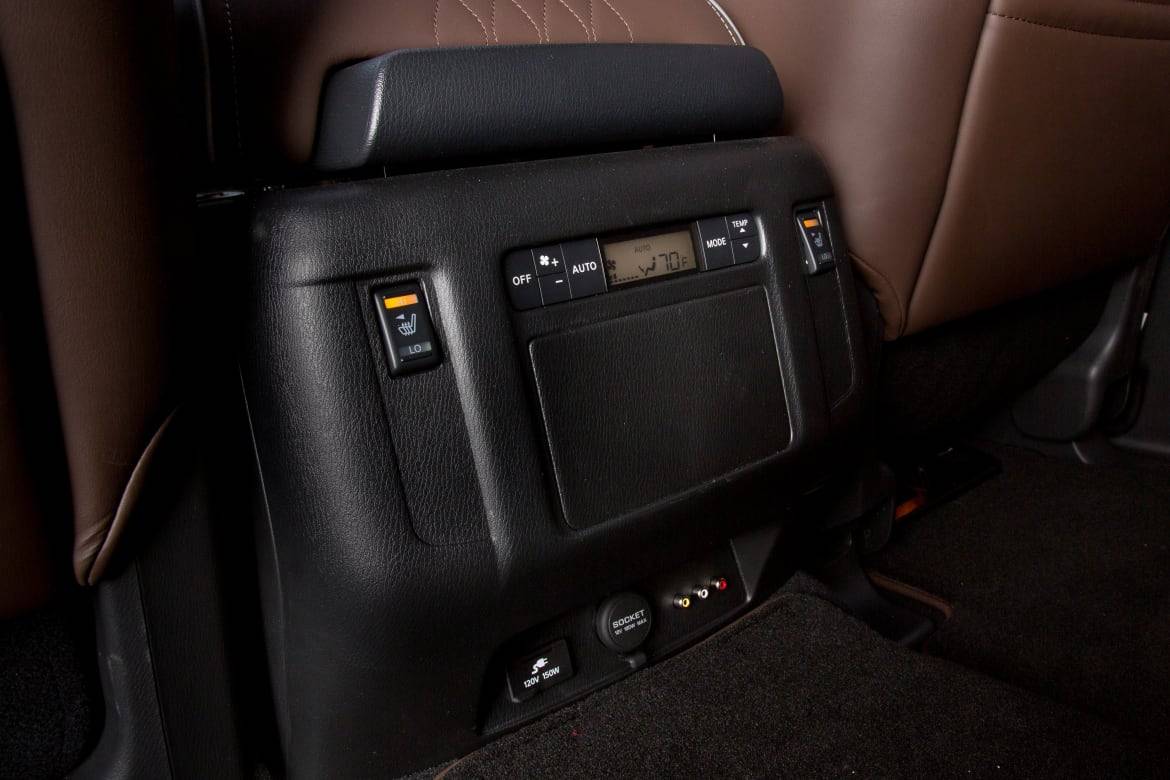
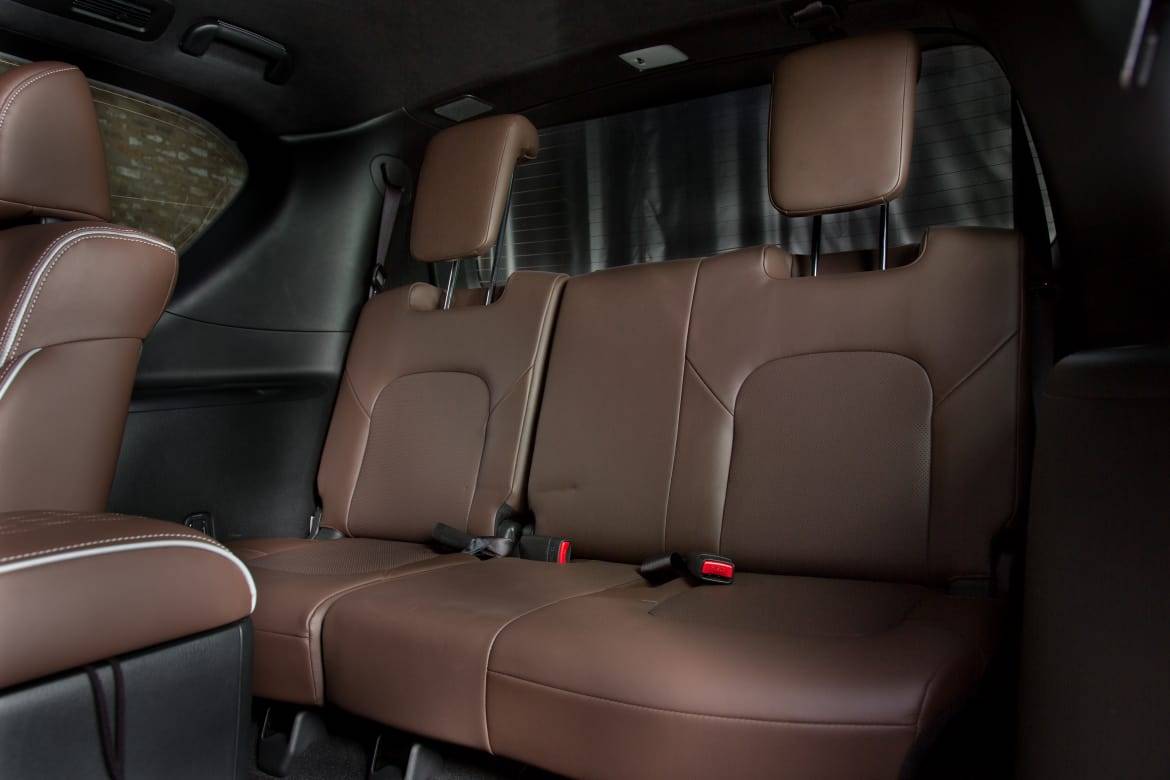
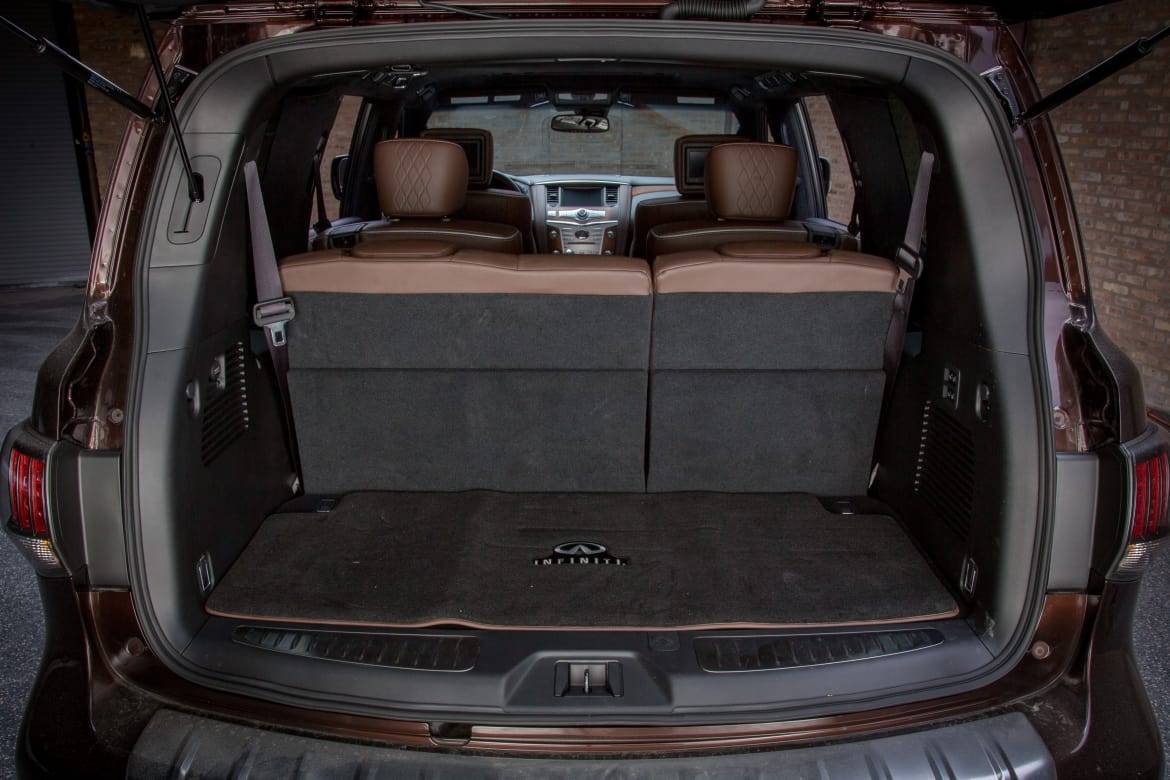
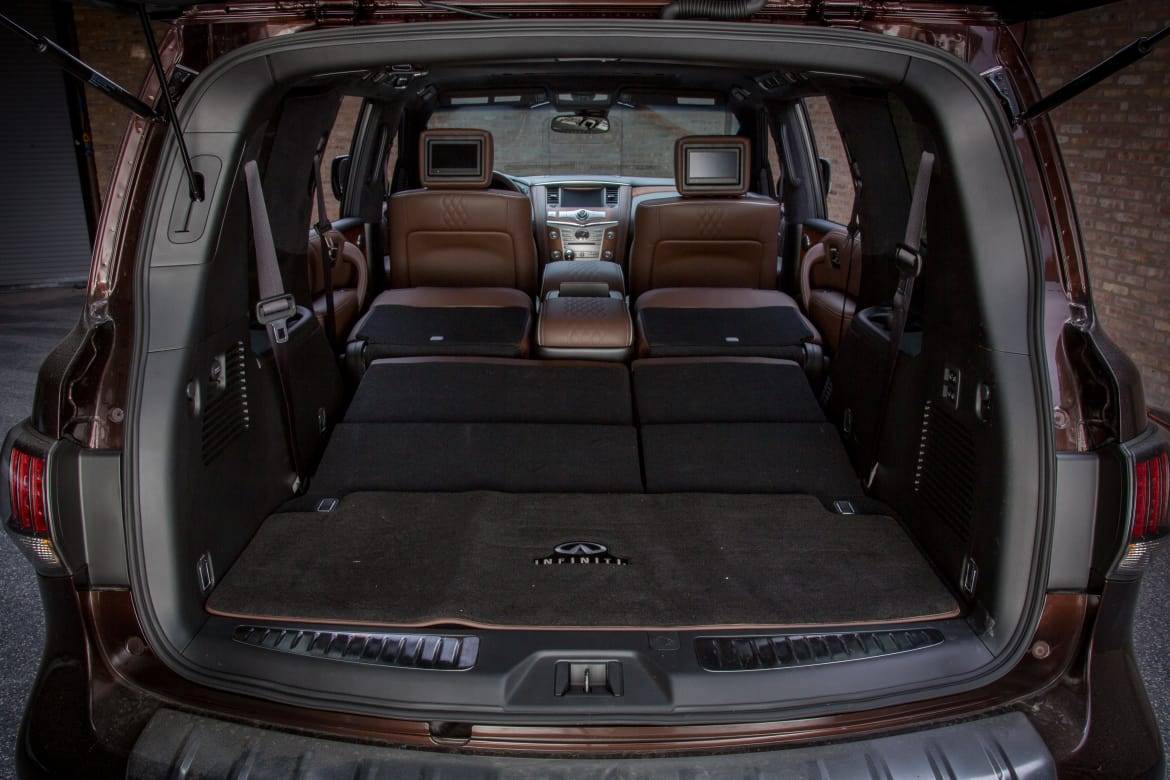



















The QX80 is Infiniti’s largest SUV, with seating for up to eight in three rows. It’s also the only truck-based SUV in the luxury brand’s lineup, and its rugged Nissan foundation helps give it an 8,500-pound maximum towing capacity. Truck-based competitors include the Cadillac Escalade, Lincoln Navigator and Lexus LX 570 (see their specs compared here).
The QX80 starts at $64,845, including a $995 destination charge, but the as-tested price of the top-of-the-line Limited we drove was a significantly higher $90,445.
Exterior & Styling
The Infiniti QX80’s smooth body sides and upright profile give it a traditional SUV look from certain angles. The front end, however, is considerably more adventurous; there’s a bulging hood and a large grille bordered by LED headlights. It’s the same approach used by the Escalade and LX 570, which also feature eye-catching front styling.
$$IMAGE-3,4,5,6,7,8,9,$$
How It Drives
Full-size-SUV drivers have long had to put up with floaty body motions, numb steering and spongy brake-pedal feel. In some models, they still do, but the QX80 shows it doesn’t have to be that way; this SUV has the driving composure of a smaller model.
The Infiniti QX80’s handling prowess is its most impressive quality. Infiniti has done an expert job quelling nosedive during braking and rear-end squat under acceleration — problems that remain common among full-size SUVs. Credit the SUV’s optional Hydraulic Body Motion Control system, which shifts hydraulic fluid among all four corners to vary suspension firmness and lessen body motions. Minimal body roll; light-effort, direct steering; and predictable, linear brake-pedal feel are also highlights that help separate the QX80 from its luxury competition. And even though you sit up high, in a throne-like driving position, the QX80 doesn’t feel top-heavy, as do some full-size SUVs. However, with the optional suspension and low-profile tires on 22-inch alloy wheels, the QX80’s ride is taut; you feel small bumps and expansion joints.
All versions are powered by a 400-horsepower, 5.6-liter V-8. The engine is strong off the line and makes enough power and pounds-feet of torque overall to accelerate this big SUV to highway speeds in short order. Its power reserves aren’t as deep as the Land Rover Range Rover’s available supercharged V-8, but there’s enough for high-speed passing, and the engine works with a responsive seven-speed automatic transmission.
I like how Infiniti hasn’t suppressed the V-8’s refined growl; it’s not too loud, but the sound is ever-present in the cabin. However, a lot of other, less desirable sounds — like road noise — find their way into the cabin, too.
Infiniti’s Distance Control Assist is optional for the QX80. It’s designed to make stop-and-go driving less taxing by automatically braking the SUV in response to slowing traffic.
Rear-wheel-drive Infiniti QX80s get an EPA-estimated 14/20/16 mpg city/highway/combined, while all-wheel-drive versions are rated 13/19/15 mpg. The LX 570 is also rated 15 mpg in combined driving, while four-wheel-drive versions of the body-on-frame Escalade and Navigator are slightly more efficient: They’re both rated 17 mpg.
Interior
Our Limited test model had large swaths of high-quality leather seats and open-pore wood trim, but between these high-end finishes were other elements — mostly technology-related — that didn’t seem nice enough for an expensive luxury SUV.
Fast-advancing electronics technology has a way of making earlier tech look dated, and that’s what’s happened in the QX80. The low-resolution monochrome trip computer between the analog gauges looks old, just like the graphics of the dashboard touchscreen. Both screens display valuable information, they just look out of place in a $90,000 SUV.
$$IMAGE-10,13,14,15,16,17,$$
Comfy, wide bucket seats give you a commanding view of the road. It’s a bit of a climb up to the front seats, but standard running boards and grab handles make the task easier. The SUV has large side windows that help you see more of what’s around you when checking your blind spots.
The Infiniti QX80’s standard seven-seat configuration includes first- and second-row bucket seats and a three-person third-row bench. An optional, split-folding second-row bench seat increases the seat count to eight. Our test model had the second-row bucket seats, which are very comfortable and have the same kind of wide feel as the front seats. They recline but don’t slide forward or backward. Legroom is generous.
Most full-size SUV third rows are comically small when you consider the exterior bulk of the vehicle, and the Infiniti QX80’s rearmost seat is no exception. Legroom is extremely limited, and with the seat cushions not far off the floor, you sit in an uncomfortable position with your legs bent tightly at the knees. The only non-extended-length full-size luxury SUV that does third-row comfort right is the Lincoln Navigator.
Ergonomics & Electronics
While some luxury brands force you to operate the multimedia system one way, like Mercedes’ Comand knob-based interface, Infiniti has taken a different approach by offering multiple ways to control the multimedia system. You can use the standard 8-inch touchscreen, the dashboard knob controller or various buttons and knobs on the dashboard.
$$IMAGE-11,12,$$
A six-month trial of Infiniti Connection is standard. The emergency communication service includes automatic collision notification, enhanced roadside assistance, and remote locking and unlocking capability, among other features.
Infiniti’s Around View Monitor 360-degree camera system is standard, along with front and rear parking sensors. Both features are useful when parking this big SUV — especially the cameras, which show various angles on the dashboard screen.
Cargo & Storage
The QX80’s cargo area is a tiny 16.6 cubic feet with all three rows of seats in place, and you have to clear a high bumper when loading luggage. Competitors’ cargo areas are similarly small: The Navigator’s rearmost cargo area measures 18.1 cubic feet, while the LX 570 has 15.5 cubic feet and the Escalade 15.2 cubic feet. The QX80’s split-folding third row has standard power operation; when it’s folded, cargo space increases to 49.6 cubic feet.
$$IMAGE-18,19,$$
In seven-seat form, the QX80 has center consoles between the first- and second-row bucket seats, and both consoles have a deep storage bin under the armrest. Additional storage spaces include a good-sized glove box, door pockets, a shallow underfloor compartment in the cargo area, and a forward cubby in the second-row console.
Safety
As of publication, the QX80 hadn’t been crash-tested by the Insurance Institute for Highway Safety or the National Highway Traffic Safety Administration.
Optional active safety features include a blind spot warning system, forward collision warning with automatic emergency braking, backup collision intervention and lane departure warning and prevention.
Value in Its Class
The full-size luxury SUV has become something of a showcase for adventurous design, as the number of models with big, in-your-face grilles continues to grow. These vehicles are designed to make a statement wherever they happen to be, and the QX80 lives up to that expectation while delivering a driving experience that’s considerably better than the class norm — and at a starting price that’s lower than most competitors.

Mike Hanley has more than 20 years of experience reporting on the auto industry. His primary focus is new vehicles, and he's currently a Senior Road Test Editor overseeing expert car reviews and comparison tests. He previously managed Editorial content in the Cars.com Research section.
Latest news
